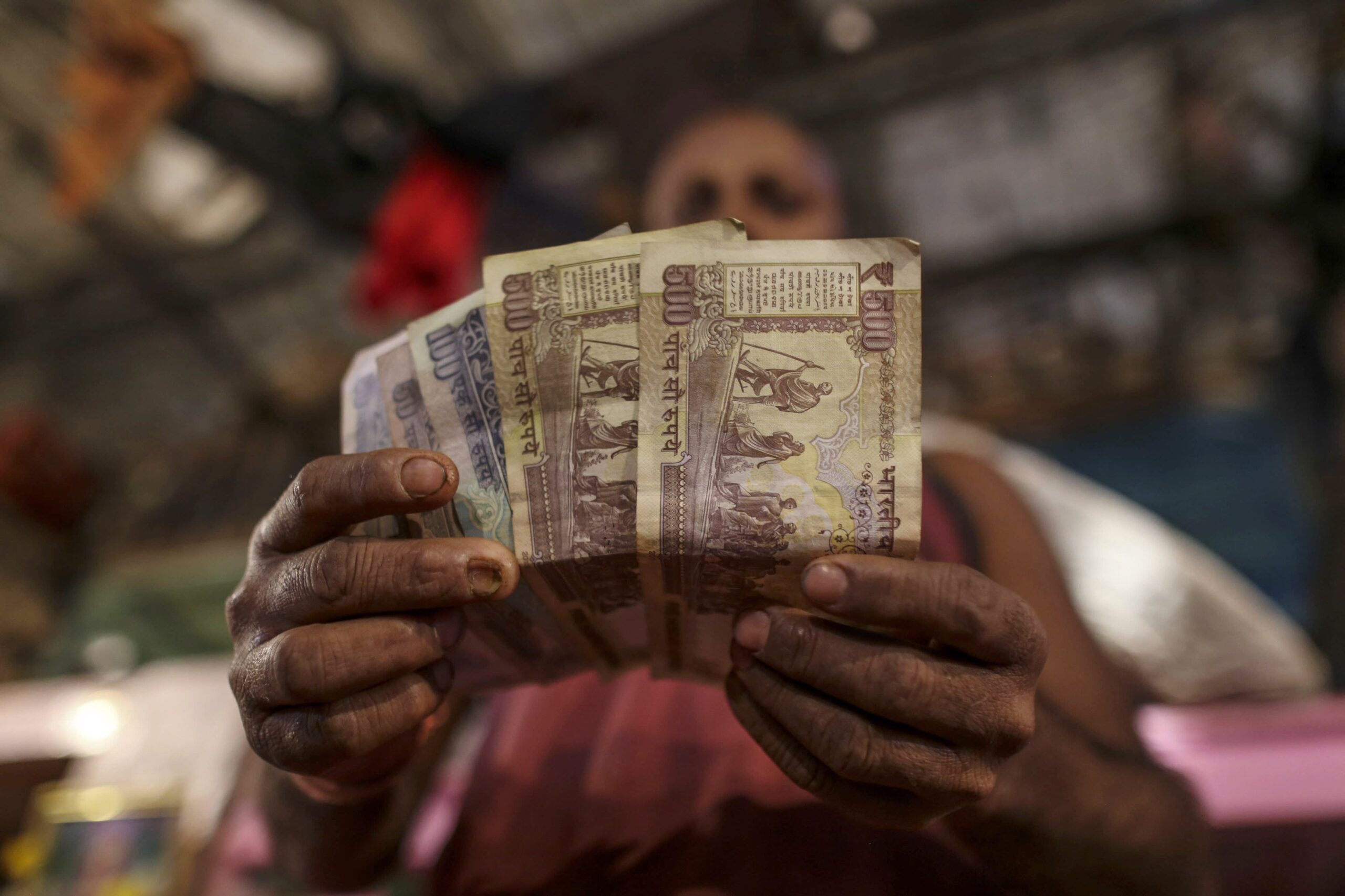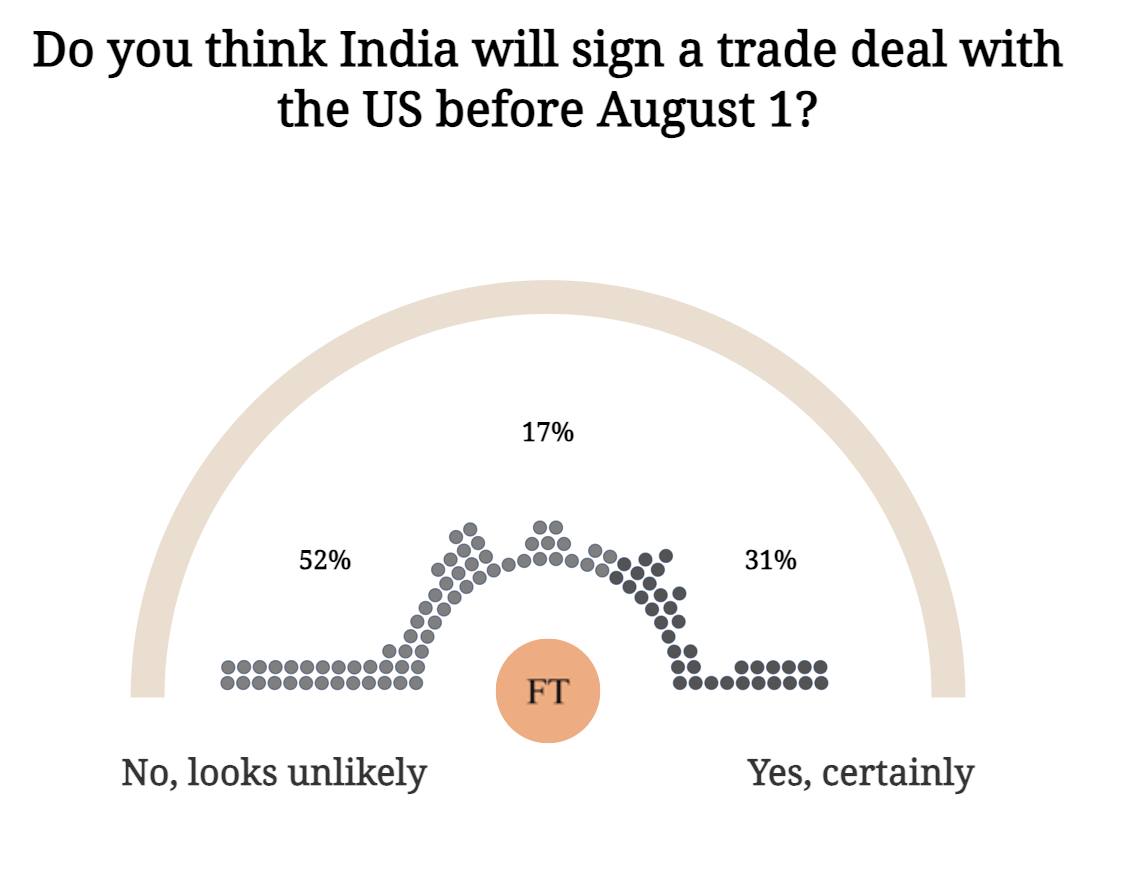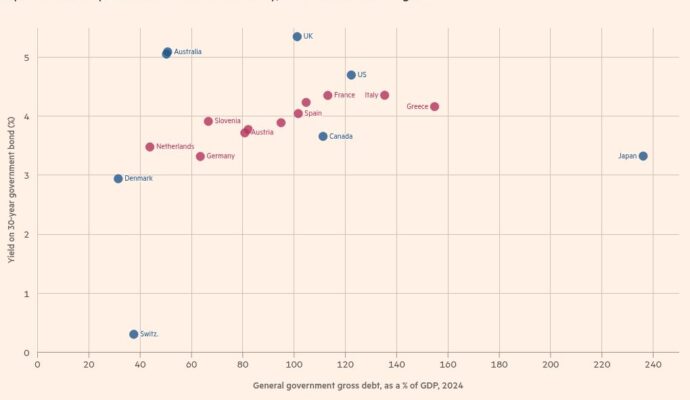Writing this newsletter in the age of Donald Trump is like herding cats — there is neither order nor logic, and everything I have written could be completely obsolete by the time the newsletter reaches your mailbox. There has not been a better week to illustrate this. On Wednesday Trump posted that he was slapping India with 25 per cent tariffs. In the time it took for me to fly from Mumbai to Delhi, he had told reporters that negotiations were still on, adding: “We’ll see what happens.”
I’m writing this on Thursday, but it is entirely possible that by the time you read it today, there will be a deal with a lower than 25 per cent tariff for India. Even so, recent events raise a couple of pertinent questions that will remain relevant beyond the specific terms of any deal. Let’s examine them.
NB: As of 7am IST, no trade deal has been reached, and Trump has reimposed tariffs on dozens of countries. Follow our live coverage here. — Tee
1. What will happen to India’s oil supply?
The more unexpected aspect of Trump’s remarks was his mention of a “secondary” tariff on India for buying oil and military equipment from Russia. Trump is taking out his real frustrations — his inability to control Vladimir Putin — on New Delhi, calling the two countries “dead economies” in another social media post.
India is unlikely to agree to any deal that entirely prohibits the purchase of Russian oil, which makes up more than a third of its crude imports over the past 12 months. What is more probable is a reduction in the volume, though how to structure this and make up for the shortfall will be difficult questions for India’s negotiators, as they weigh these against the benefits of an American deal.
2. What’s happening to India-US ties?
When Trump was voted into power for a second term, India hoped to cash in on Narendra Modi’s friendship with him. But their relationship status seems to have changed to “it’s complicated”. Modi is now facing heat in parliament over Trump’s claims that he negotiated a stop to Operation Sindoor. The prime minister has not been helped by the US president’s actions: praising Pakistan army chief Asim Munir after inviting him to lunch at the White House. Yesterday, Trump also talked about an oil deal with Pakistan, and needled India about it.
Modi is right not to react to Trump’s tantrums, but the optics unfortunately do not favour his image as a strong leader. How this will affect future negotiations on issues of security and economics with the US is hard to predict, but it does look like India will have to start from a weakened position. The nationalistic stance that India should now reject any deal with the US and deny American manufacturers access to the large Indian market may seem satisfying. But too much is at stake for the economy.
That said, a deal, in whatever shape, will not alleviate the uncertainties faced by exporters to the US, including outsourced manufacturing by companies such as Apple. Even after this week’s theatrics conclude, and when Trump is done showing he won’t “chicken out”, bilateral dynamics will still be in flux. To borrow the words of the architect of this current chaos — “we’ll see what happens”.
Do you think India should walk out of the trade talks with the US? Hit reply or email me at indiabrief@ft.com
Recommended stories
Apple reported strong earnings but could not shake investor fears over tariffs, while Meta shares jumped 11 per cent after Mark Zuckerberg spelled out his goals for “superintelligence”. And Microsoft profits soared almost 25 per cent on the cloud computing boom.
The Fed defied Trump’s call for a rate cut.
Tata Sons is expected to fend off the Reserve Bank of India’s order for an IPO.
Hermès is growing in a difficult luxury market, thanks to the Birkin bag.
From muscle-defining massages to quantum molecular resonance facials, these are the five buzziest beauty treatments.
Banks wait for tide to turn

It has been a difficult quarter for many private banks in India. HDFC Bank, Kotak Bank and Axis Bank all reported lower net interest margins for the first quarter of the current fiscal year, indicating that what these lenders are earning on loans is not keeping pace with what they are paying out on deposits.
Several banks also had to increase the amount of money set aside to provision for potential losses in their lending business. Axis Bank reported that increased provisioning had led to a 4 per cent drop in net profits, with the country’s third largest private lender adding that the trend would continue into the next quarter.
Even those that reported profit growth, such as HDFC Bank, sounded more cautious in their management commentary, calling the credit environment “benign”. HDFC Bank’s net profit rose 12 per cent year on year, although a large chunk of it was attributed to a 108 per cent rise in “other income”, such as treasury earnings. ICICI Bank had a great quarter, with net profit climbing 15.4 per cent and healthy growth in its loans and deposits.
Analysts I spoke to expect these tight conditions to carry on for the next two quarters. Nitin Aggarwal, banking analyst at Motilal Oswal Financial Services, attributed the shrinking net interest margins to loans being repriced, after the Reserve Bank of India cut the repo rate in three consecutive cycles starting in February this year. “We are expecting earnings growth to start bouncing back in the last quarter of this fiscal year,” Aggarwal told me.
The struggle in the banking sector, especially with unsecured loans, reflects real stress in the economy. The interest rate cuts have yet to ease the pressure on India’s large middle class, as the negative trend in the RBI’s own urban consumer confidence survey shows. Recent results of consumer goods businesses in India, including the local operations of Nestlé and Colgate-Palmolive, also bear this out (though Hindustan Unilever did have good numbers out yesterday).
The rate cuts have also not spurred capital expenditure in the private sector, despite repeated scoldings from finance minister Nirmala Sitharaman. In its most recent economic review, her ministry pointed out that credit growth had slowed “despite monetary easing and a strong bank balance sheet”. The ministry said this reflects “cautious borrower sentiment and possibly risk-averse lender behaviour”.
Some readers may point to economic indicators that seem to show a rosier picture for India. On Wednesday, for example, the IMF dialled up the country’s growth outlook, pegging 2026 growth at 6.4 per cent, up from 6.2 per cent. But these longer-term green shoots are not yet visible in the real economy of today. Also, India’s GDP growth number often hides more than it reveals. And now with the continued overhang of troubles in global trade and geopolitical tensions, the general mood in the economy is as dreary as the grey skies of Delhi this weekend.
Go figure
Trump wants India to stop buying oil from Russia, which accounts for more than 33 per cent of India’s crude imports. Here is a look at where else India’s oil is coming from.
14%
Saudi Arabia
Read, hear, watch
I spent most of this week in Mumbai. The Taj Santacruz is so close to the airport that you feel like you are almost sitting on the runway. The view from the top floor is great, especially if you are an aviation geek (I am not). But what I am is a book geek, and the hotel has a great bookstore in the lobby, which is a rare sight these days.
I had a superb dinner at the Japanese restaurant Izumi in Bandra. Good vibe, great food. I also highly recommend a cocktail they call Dotonbori Dream. With smooth tequila and mezcal, salted wasabi honey and yuzu, it was tangy and refreshing. It took all my powers of self control to not order a third and a fourth.
To take the edge off my growing flying anxiety, I revisited an old favourite, A Fish Called Wanda. It’s one of those rare comedies that has aged well.
Buzzer round
Today we have a guest quizmaster. India Business Briefing reader and frequent Buzzer Round winner Aniruddha Dutta has sent this question.
For the past few years, between August and December, the Reserve Bank of India has been using a televised event to promote financial literacy and awareness. Name the event.
Send your answer to indiabrief@ft.com and check Tuesday’s newsletter to see if you were the first one to get it right.
Quick answer
On Tuesday, we asked: Do you think India will sign a trade deal with the US before August 1? Fifty-two per cent of you were right to be sceptical about the prospects.

Thank you for reading. India Business Briefing is edited by Tee Zhuo. Please send feedback, suggestions (and gossip) to indiabrief@ft.com.


